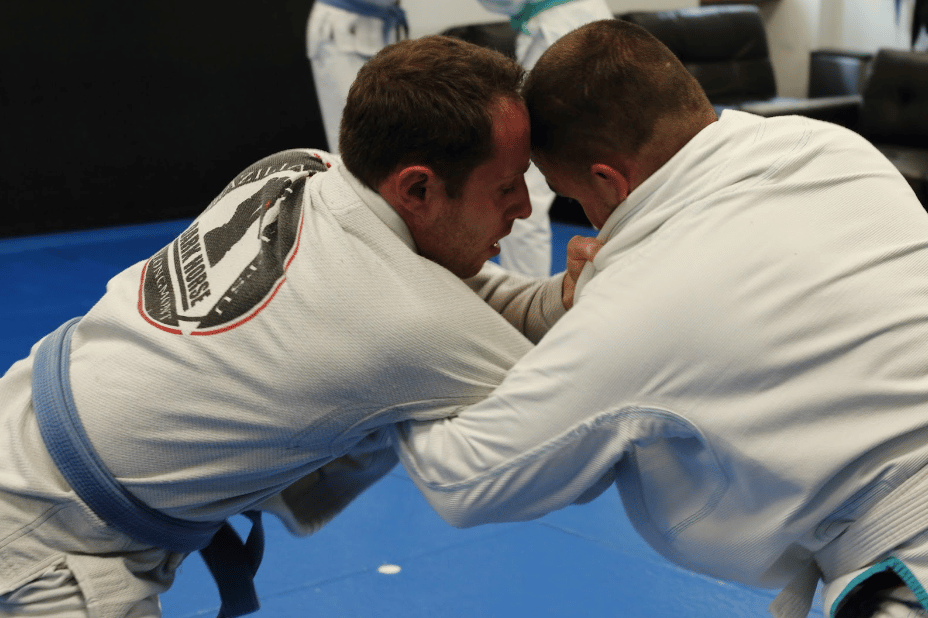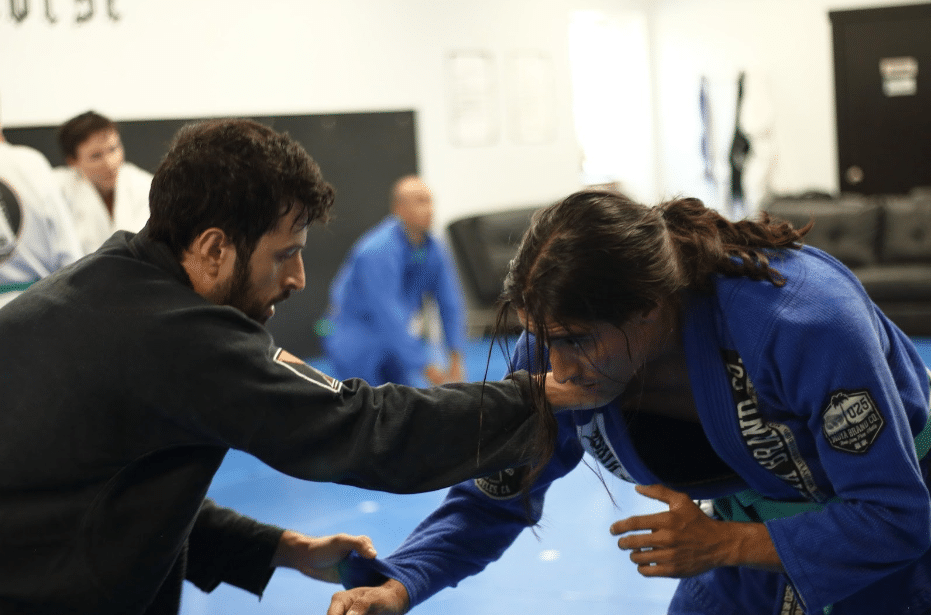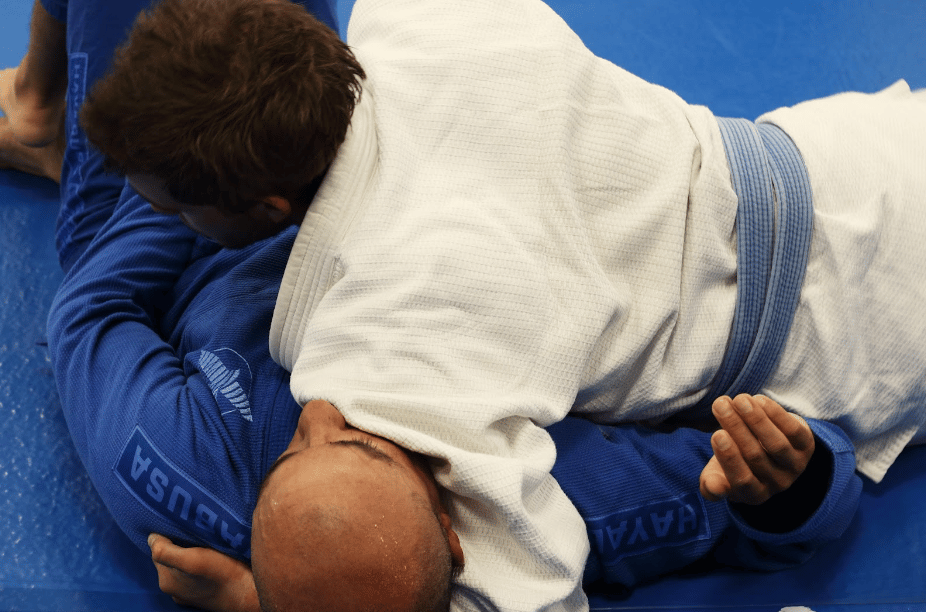Brazilian Jiu Jitsu Lingo
BJJ Terminology
Like anything in life, Brazilian jiu jitsu (BJJ) uses a range of unique terms in daily conversation. Here is a compilation of regularly used terms. Becoming familiar with these will aid to your understanding of training techniques and will improve your knowledge allowing you to focus your time on training.
Base
In jiu jitsu, base is defined by your points of contact with the ground in such way as to allow mobility yet to apply the most leverage. The simple adjustment of being on the balls of your feet vs standing flat footed affords you a better base. You have maneuverability and focused leverage. “A platform from which to apply and absorb force.” (Stephan Kesting Grapplearts.com)
BJJ
BJJ is an acronym for Brazilian Jiu Jitsu. Saying Brazilian Jiu Jitsu is too much effort, especially for a sport that is so attached to being efficiency. So we say BJJ.
Break Fall
In Brazilian jiu jitsu we sometimes use techniques to take our opponent to the mat, either as a sweep or a throw. To break fall is the technique to fall without doing significant damage. We tuck our head and use our arms shoulders and butt or side to take the impact of the fall spreading it across other parts of our body.
Bridge
This is the motion of thrusting our hips in the air to force an opponent into a position where we can maneuver better. Bridging is the motion of using our core with our feet planted firmly on the mat/ground and pressing our hips into the air using our shoulders or head as a pivot point. Bridges can be done straight back forcing the opponent over our shoulders, or from either side causing our opponent to move to left or right providing us with an exit or a way to replace.
Clinch
To tie up your opponent by wrapping your arm around their head and controlling the body by hugging them under the arm around the chest. This is typically done from a standing position.

Connection
This word is used to describe the contact between you and your opponent with or without the ground. If you have a good connection to your partner, when you move, your partner is forced to move.
Chaining
Chaining refers to the jiu jitsu concept of seeing and knowing moves which can be done one after another in a smooth sequence. A simple chain is toreando, superman, smash pass.
Flow training
Flow training is the act and art of moving through positions and techniques with a partner using little or no pressure. It is a mindless chess game of sequences and techniques expressed like a dialogue using nearly no strength or pressure. During a flow session you can isolate and analyze how techniques may chain together effortlessly.
Grips
A grip is the active holding of a person’s gi; top or kimono by the lapels/collar, sleeves or pant. You can also have a grip on an ankle, wrist, hand, or foot.

Gable Grip
The gable grip is where you cup your hands together protecting the thumbs. Sometimes this is referred to as “hamburgers” as it looks like you are making hamburger patties.
Grape Vine
When you interweave your legs and hook your feet around the legs of another combatant. Your legs look like a grapevine.
Hooks
Hooks is a description of when we use our feet to control and wrap around another person. Used as a source of control, hooks are among the more advanced techniques in some positions.
Indicators/Cues
Throughout your journey coaches will point out moments (indicators) or reactions which you are looking for or trying to draw out of your opponent to allow you to do a technique. If you are in closed guard and your opponent is pushing up to posture this would be an indicator that it is opportune time to use the fan sweep.
Kazushi
This word is connected to jiu jitsu roots from judo and means fitting or entering when throwing an opponent. This word is used to describe the contact made with the appropriate leverage, body contact and position needed to easily throw your challenger no matter their size.
Leverage
Leverage is when you effectively use your body positioning in a mechanically strong way. By turning your body or your opponents body into a lever, you are able to exert much more force and therefore do exponentially more damage. When done correctly, you use little energy or effort to maintain a position, execute a submission, or escape from a stronger/larger opponent.
Post
To post is to use your leg or arm to create a firm structure between you and your opponent or you and the mat. Thus making it more difficult to be swept or passed.
Posture
Posture is related to leverage. Using good posture is the concept of using the body’s physiology to strengthen a position or technique. Good posture takes advantage of bone on bone physics instead of relying on muscles. Your posture when braking guard is with your back fairly straight, shoulders not crossing your opponents beltline and arms locked straight.
Pressure
Pressure is the proper application of weight and control placed on an opponent effectively controlling and limiting their options. With a head wrap you can drive your shoulder into the neck or face creating greater pressure.

Rolling
Rolling describes the active process of using the techniques with a partner. It is the BJJ equivalent of sparring.
Randori
Randori is used as a class name defining what takes place during the class. Randori is not learning a specific technique or series of techniques. It is a class period where we roll with different partners and test our knowledge in a safe, controlled combat/competition environment. We use this time to perfect our techniques and practice them. It can also be referred to as “open mat”.
Seat Belt
This is the word used to describe a person locking there hands around the shoulder and chest of an opponent from behind.
Sweep
Sweep is the forced change of position by one of the combatants. Moving them from the bottom position to the top. In many competitions a sweep earns you points.
Take Down
A take down is a sweep or throw which forces your opponent off of their feet and onto the ground.
Tap Out/Tapping
To tap out is to verbally and/or physically indicate to your partner to stop or yield. Saying “tap” patting your partner (or the mat) firmly at least three times will inform your partner to stop whatever they are doing. It is like saying, “Uncle” but without the negative connotation.
Published: January 6, 2023
Categories: Brazilian Jiu Jitsu, Culture
Tags: Brazilian Jiu-Jitsu, terminology